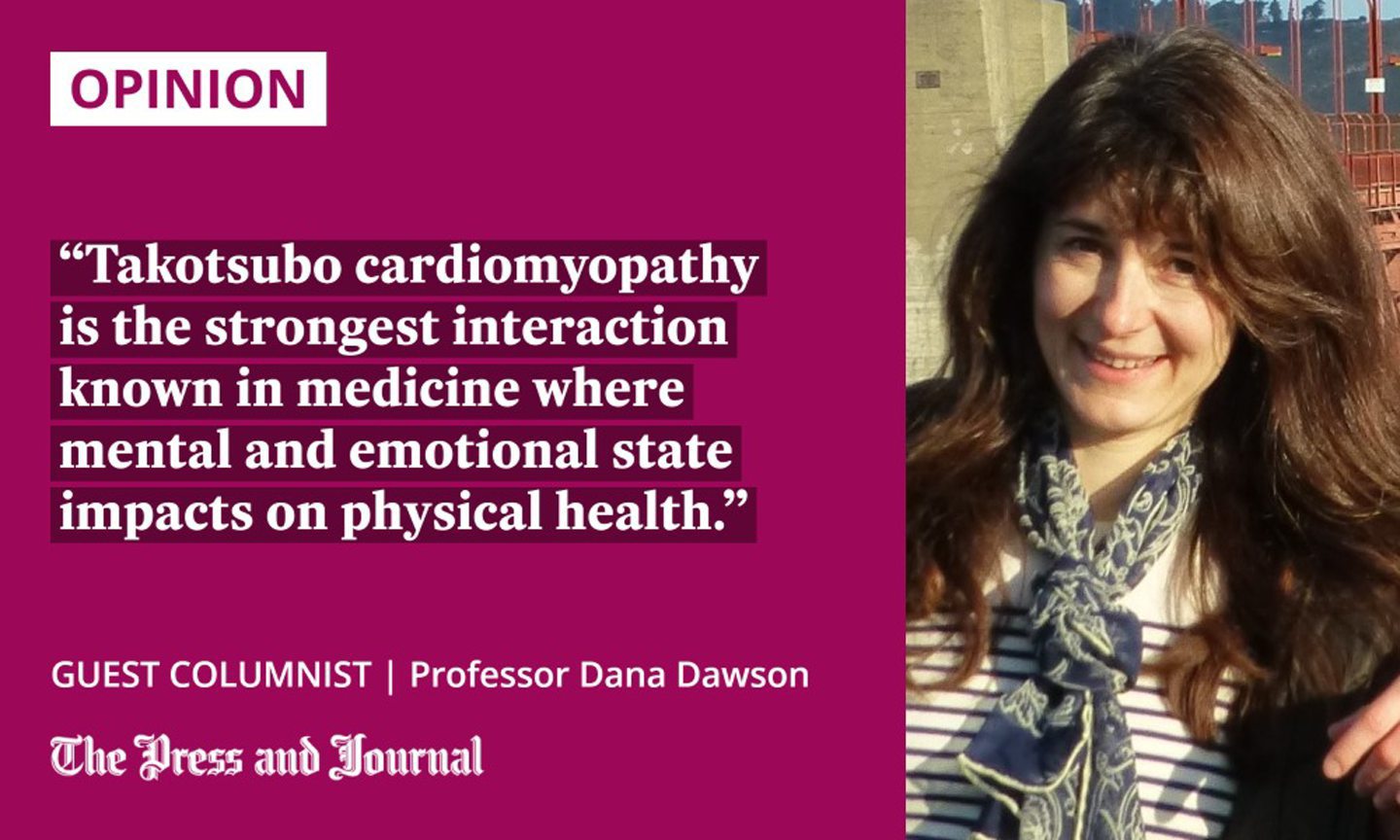Takotsubo cardiomyopathy – also known as broken-heart syndrome – can develop at any age, and affects more women than men, writes Professor Dana Dawson of the University of Aberdeen.
Can you die of a broken heart? For those unfortunate enough to have experienced heartbreak, it can certainly feel like that.
I am part of a group of scientists researching a phenomenon called Takotsubo cardiomyopathy, which we now know can be triggered by extreme emotional distress, leading to its nickname of “broken-heart syndrome”.
The condition develops as a reaction to a surge of adrenaline to the heart, which has been caused by upsetting events, such as the death of a family member, or the ending of a relationship. But understanding of Takotsubo cardiomyopathy is growing, and there is evidence that it can be prompted by other factors, including physical trauma or even no incident at all.
Broken-heart syndrome happens when one of the heart’s chambers, the left ventricle, suddenly balloons and weakens. The heart then can’t pump blood around the body as before, and the extra stress leads to heart failure. It can develop at any age, and, typically, affects more women than men.
 Symptoms can appear like a heart attack and include a shortness of breath and chest pain. But, Takotsubo cardiomyopathy is a different condition entirely and, unlike a heart attack, patients don’t suffer from a blockage of the arteries that supply the heart with blood.
Symptoms can appear like a heart attack and include a shortness of breath and chest pain. But, Takotsubo cardiomyopathy is a different condition entirely and, unlike a heart attack, patients don’t suffer from a blockage of the arteries that supply the heart with blood.
My research focuses on understanding the condition and how it impacts people, which will inform how patients are treated, including identifying potential therapeutic treatments that could be tested in future trials.
Broken-heart syndrome is the strongest interaction known in medicine where mental and emotional state impacts on physical health. Current research is looking at whether individuals are predisposed to the condition.
Longer-term, it can be as significant as a heart attack
Takotsubo cardiomyopathy has only been recognised in recent years, and so our knowledge remains limited. For this reason, it is vital that we continue to learn more about this area of cardiology and its longer-term impact on patients.
Previous research from the University of Aberdeen has shown that, although a large amount of the heart function appears to recover in the aftermath of the condition’s acute presentation, it can continue to cause symptoms in a significant number of people.
Initial evidence suggests that, overall, the longer-term outcome can be as significant as for someone who has suffered a heart attack. The team has also demonstrated that there is increased inflammation both in the heart and whole body in patients who suffer an episode of Takotsubo cardiomyopathy, and this remains present for some months.
You can read more about broken-heart syndrome on the British Heart Foundation’s website, which includes information on where to go if you have concerns.
Professor Dana Dawson is part of the University of Aberdeen’s Cardiology and Cardiovascular Research Unit, as well as a consultant cardiologist at Aberdeen Royal Infirmary

Conversation